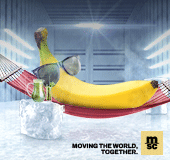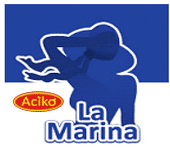The Reefer container market remains strong in the first quarter of this year
2025-02-14

According to DHL Global Forwarding's latest Ocean Reefer Market Update, demand for fresh produce, pharmaceuticals, and frozen goods is driving the market despite regional slowdowns and disruptions from diversions around the Cape of Good Hope.
Ongoing geopolitical tensions in the Red Sea region make operations more complex than usual. This leads to disruptions in shipping between Asia and Europe, which adds costs and delays. Storms and droughts have also affected crop yields and export timelines for perishable goods.
The update indicates that reefer freight rates will remain elevated in the near term due to capacity constraints and rising operational costs. High costs and imbalances between supply and demand suggest that freight rates will unlikely return to pre-pandemic levels for the remainder of this year.
The peak fruit export season in the first quarter, which includes citrus, grapes, and berries, continues to drive high demand for reefer containers, mainly from South America and South Africa. Although the labour dispute at U.S. East and Gulf Coast ports has been resolved, U.S. tariffs' uncertainties still impact global trade flows.
DHL noted that "tight capacity, rate fluctuations, and shifting trade patterns are defining the current market landscape." It is worth mentioning that last year, realignments among shipping alliances caused short-term reliability issues.
On a positive note, the citrus season in Egypt has grown by 15% compared to the previous year, while key commodities like meat, bananas, and fish are recovering after two years of decline. The outlook for the ocean freight market in this first quarter presents challenges; however, demand growth is described as "cautiously optimistic."
Some markets show signs of recovery, while others remain under pressure due to economic and geopolitical factors. For instance, the U.S. market faces uncertainties due to potential trade policy shifts, with anticipated higher tariffs affecting China, Canada, and Mexico. A slower-than-expected recovery is forecasted for Asia, while inflationary pressures influence European demand. Additionally, stricter environmental regulations, such as the 2024 GHG measures, contribute to rising operational costs.









